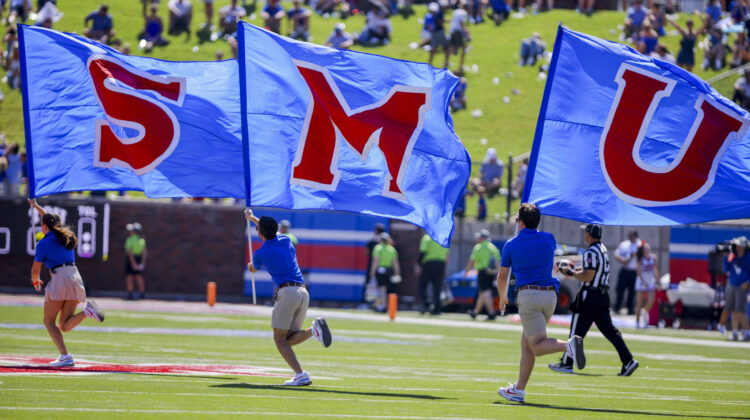Any Cal and Stanford fans planning to travel with their teams starting next fall will experience the big cities and storied college towns of the ACC, from Chapel Hill, Tallahassee and Charlottesville to Miami, Atlanta and, err, Dallas.
SMU joined the league on Friday, along with the Bay Area duo. The Dallas-based university not only brings a massive media market but also a campus with workable geography for schools on both coasts.
It could be the destination of choice for the Cardinal and Bears if the ACC eventually implements a creative scheduling plan for its Olympic sports.
“There were countless hours of discussions about how we can schedule in the future,” ACC commissioner Jim Phillips said Friday. “It was an amazing exercise. We want to eliminate as much of the burden on the student-athletes as we can. We have to be creative.”
One option under consideration: Turn SMU’s campus, or the Dallas-Fort Worth area in general, into a neutral-site hub for intra-conference matchups, meets and events.
“The ACC is really interested in using Dallas as a place where teams might come together to have games to minimize the impact of travel on both the eastern members and Cal and Stanford,’’ Cal chancellor Carol Christ said.
“We’re working this hard. I don’t minimize the challenge it presents for athletes, but I also think there are things we can do to mitigate it.”
The logistical details of competing in a Charlotte-based conference will be more daunting for some Cal and Stanford teams than others.
The Cardinal stated on its website that 22 of its 36 sports “will see either no scheduling changes or minimal scheduling impacts.”
Meanwhile, Christ said that 19 of Cal’s 30 teams ”will have their travel minimally or not at all affected” by the move into the ACC.
The unaffected or minimally affected sports compete in meets or tournaments during the regular season, like golf, tennis, cross-country and rowing.
“Their patterns of travel essentially are going to be identical (to the current situation),’’ Christ added. “We have a few teams, like field hockey, that already travel to the East Coast. And I’m not worried about football,” which will play a few conference road games per year.
The teams most likely to be impacted are men’s and women’s basketball, baseball, softball and volleyball.
“We’ll be working really hard on that to see what we can do with joint travel with Stanford,” Christ said.
Cal athletic director Jim Knowlton noted that many Olympic sports teams already play non-conference games on the East Coast and explained that men’s soccer, for example, “will probably have two trips and play two games out east, and their non-conference schedule will be far more local.
“So the net travel (impact) they will experience is one additional trip east.”
The scheduling piece consumed many hours during the weeks of negotiations between the ACC and the Bay Area schools. But a firm sense for the sport-specific details could be months away.
“We looked at how many times they were traveling already,” Phillips said. “It was amazing how many times they were coming this way.
“We pressed hard on Cal and Stanford about how they would feel about (the travel).
“We have work to do but feel like we’re headed in the right direction.”
*** Send suggestions, comments and tips (confidentiality guaranteed) to pac12hotline@bayareanewsgroup.com or call 408-920-5716
*** Follow me on Twitter: @WilnerHotline
*** Pac-12 Hotline is not endorsed or sponsored by the Pac-12 Conference, and the views expressed herein do not necessarily reflect the views of the Conference.
Related posts:

(AP Photo/Ralph Freso, File)
Hotline Mailbag – Breaking down Utah-Florida and Oregon-Georgia, Shaw’s job security and more
(AP Photo/Ralph Freso, File)
Wilner Hotline – Pac-12 survival guide: The strategic merits of an alliance (or merger) with the Big 12
(AP Photo/Ralph Freso, File)
Wilner – Here comes Newsom: Governor roasts UCLA for lack of transparency in Pac-12 to Big Ten move, vows UC regent action
(AP Photo/Ralph Freso, File)
Wilner Hotline – Presidential Power Index: Which Pac-12 presidents have the greatest influence over the conference’s future
